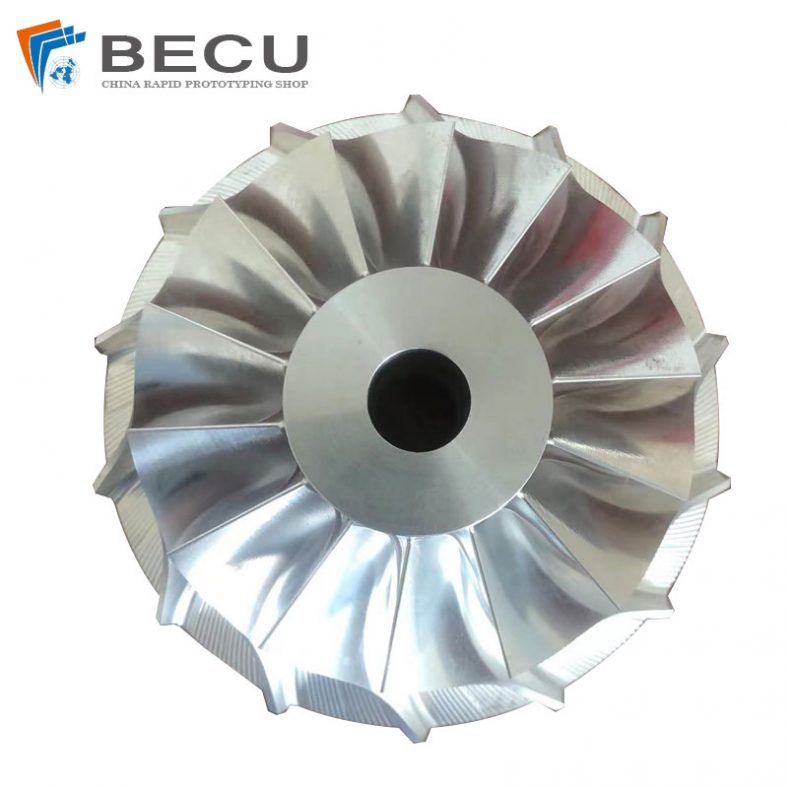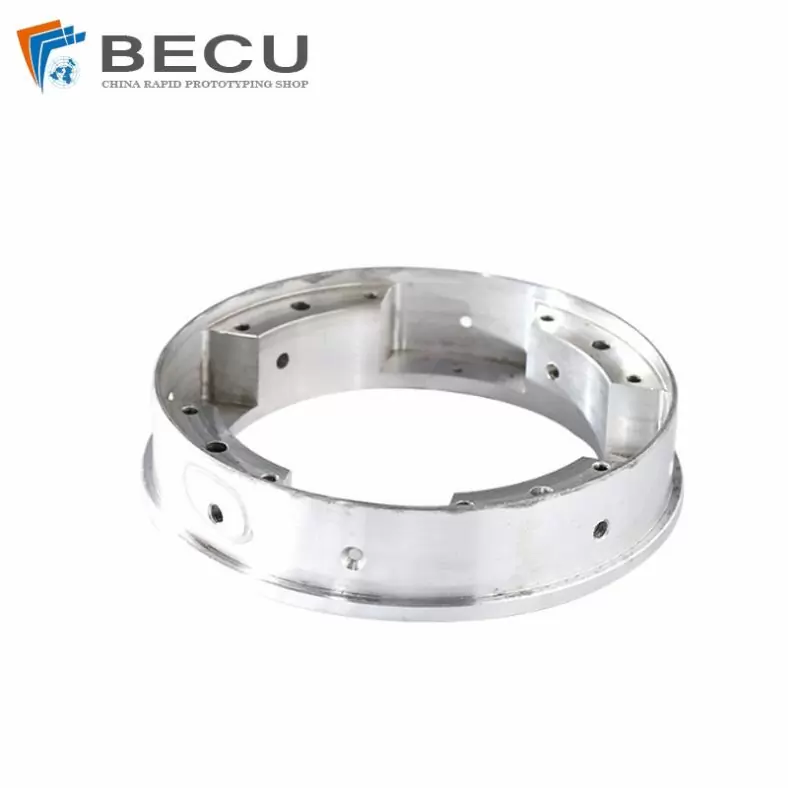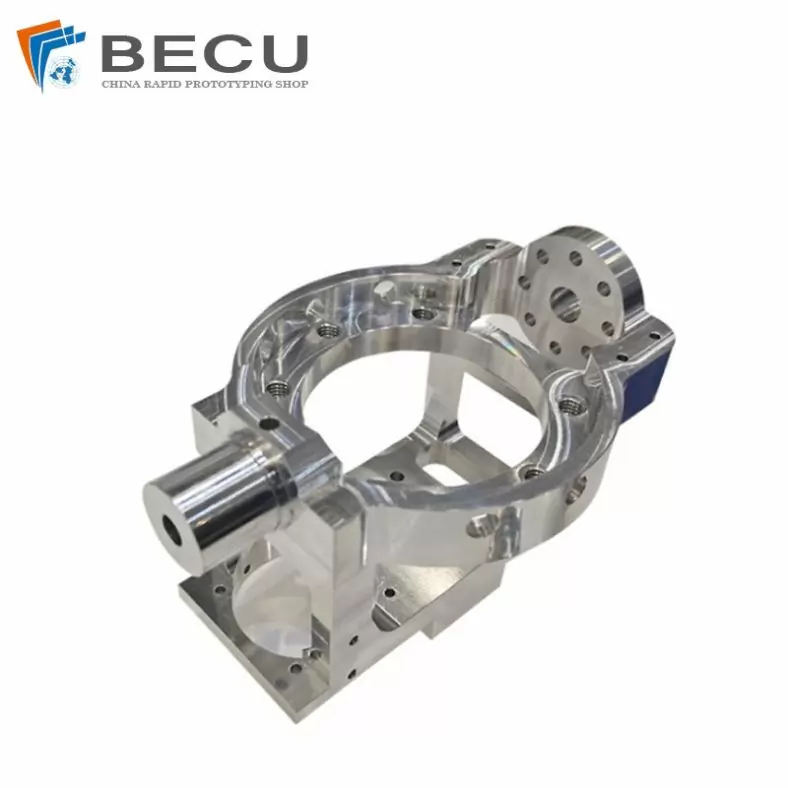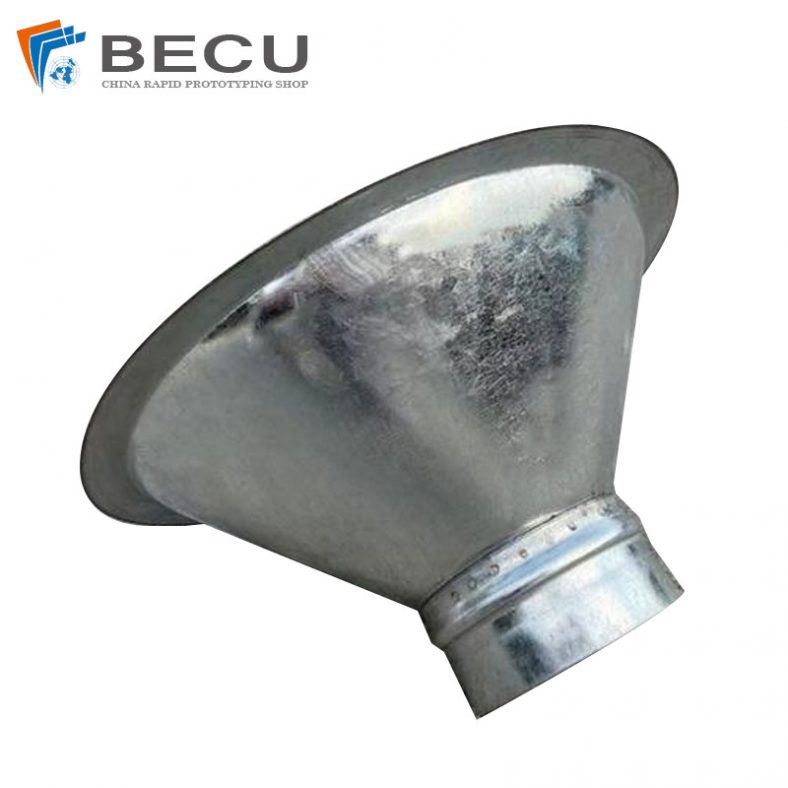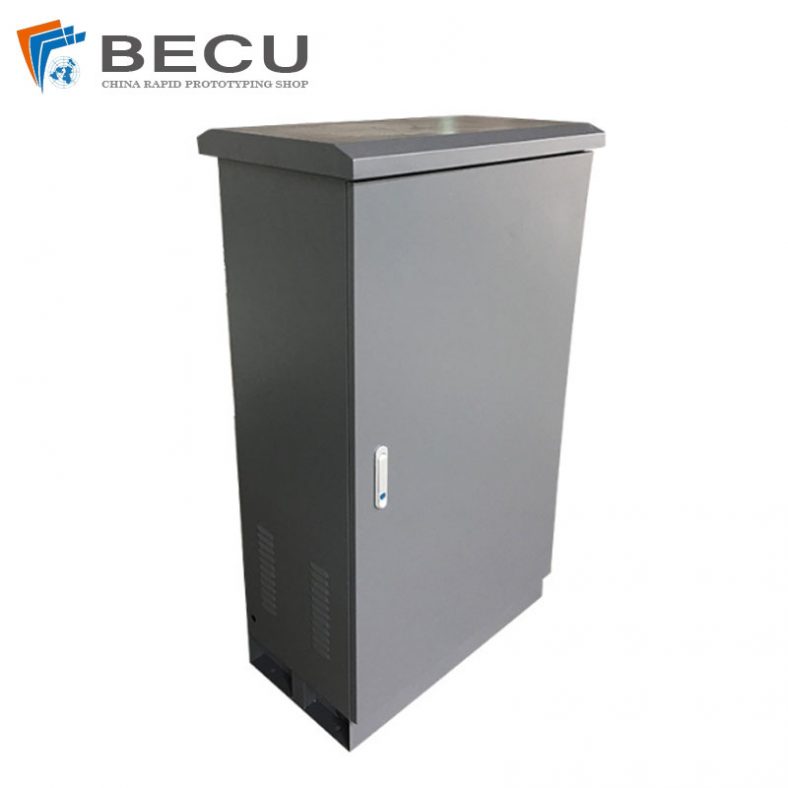Thread milling and tapping are two widely used methods for creating threads in various materials. Each method has its advantages and limitations, making it essential to understand their differences to make informed decisions in manufacturing processes. This article provides an in-depth comparison of thread milling and tapping, exploring their mechanics, applications, advantages, disadvantages, and considerations for selecting the most suitable method for specific scenarios.
View More Articles:

Introduction
Threaded components are ubiquitous in modern engineering and manufacturing, serving a crucial role in connecting, securing, and assembling various parts. The creation of threads involves precision and careful consideration, as the choice of threading method can significantly impact the quality, efficiency, and cost-effectiveness of the manufacturing process. Two primary methods that have emerged as staples in the industry are thread milling and tapping.
Background on Threading Processes
Threading, the process of cutting or forming helical grooves on the internal or external surface of a workpiece, has been practiced for centuries. Historically, threading was labor-intensive, often involving manual tools and techniques. With the advent of advanced machinery and technology, the threading process has evolved, giving rise to modern methods such as thread milling and tapping.
Importance of Choosing the Right Method
The choice between thread milling and tapping holds critical significance in manufacturing operations. Threads play a pivotal role in ensuring the structural integrity, functionality, and longevity of products, making it imperative to select the most suitable method for creating them. The decision encompasses a range of factors, including material properties, desired thread characteristics, production volume, machining equipment, and economic considerations. The right method can lead to reduced production costs, enhanced product quality, and increased process efficiency, while the wrong choice can result in compromised threads, increased tool wear, and production bottlenecks.
As we proceed, we will delve into the intricacies of thread milling and tapping, exploring their mechanics, applications, advantages, and disadvantages, thus empowering manufacturers with the insights required to optimize their threading processes.
Thread Milling: Mechanics and Process
Thread milling is a modern machining method that involves using a multi-fluted tool, known as a thread mill, to create threads in a workpiece. Unlike traditional tapping, where a tap cuts threads by axial rotation, thread milling employs radial movement of the tool to generate threads. This unique approach offers distinct advantages in terms of versatility, precision, and tool life.
Milling Cutters and Tool Geometry
Thread mills come in various shapes and sizes, tailored to specific thread profiles and sizes. The geometry of the thread mill is designed to mimic the desired thread form. These cutters typically feature multiple cutting edges, allowing for efficient material removal. The helix angle and flute design of the thread mill contribute to the efficient evacuation of chips during the machining process, reducing the risk of chip buildup and improving the surface finish of the threads.
Helical Interpolation Process
The heart of thread milling lies in the helical interpolation process. During thread milling, the workpiece is rotated while the thread mill is fed into the material along a helical path. This movement creates threads by removing material gradually with each rotation of the workpiece. The helical interpolation process offers exceptional control over thread dimensions, pitch, and depth, making it suitable for producing accurate and complex threads.
Suitable Materials for Thread Milling
Thread milling is applicable to a wide range of materials, including ferrous and non-ferrous metals, plastics, and even challenging materials like hardened steels and exotics. The versatility of thread milling stems from its low cutting forces and reduced torque compared to tapping, enabling it to work effectively on both soft and hard materials. This method is particularly advantageous when dealing with materials that are prone to work hardening, as it minimizes the risk of deformation or damage to the workpiece.
In the subsequent sections, we will explore the advantages and disadvantages of thread milling, comparing them to the traditional tapping process. By understanding the unique capabilities of each method, manufacturers can make informed decisions about which technique to employ based on their specific needs and requirements.
Tapping: Mechanics and Process
Tapping is a well-established method for creating threads in a workpiece and is widely used across various industries. The process involves cutting threads into a pre-drilled hole using a tap, a specialized cutting tool designed for this purpose. Tapping is known for its simplicity and speed, making it a preferred choice for certain applications.
Types of Taps
There are several types of taps available, each designed to accommodate specific threading requirements:
- Hand Tap: Hand taps are manually operated tools commonly used for threading small holes. They require skilled operators to ensure consistent and accurate threads.
- Machine Tap: Machine taps are designed for use with power-driven machinery and automated processes. They offer greater precision and efficiency compared to hand taps.
- Spiral Point Tap: Also known as a “gun tap,” the spiral point tap features a cutting edge at the tip that helps push the chips forward, making it ideal for through-hole threading.
- Spiral Flute Tap: This tap type has flutes that spiral around the tap’s body, aiding in chip evacuation. It is particularly effective for threading blind holes.
Tapping Process and Tool Geometry
The tapping process involves rotating the tap to cut threads into the pre-drilled hole. The tap’s cutting edges remove material progressively, forming the desired thread profile. Proper alignment and perpendicularity are crucial to ensure accurate threads. The tool geometry, including the number of flutes and the helix angle, impacts chip evacuation and thread quality.
Materials Suitable for Tapping
Tapping is well-suited for a wide range of materials, including softer metals like aluminum, brass, and mild steel, as well as plastics and composites. It is particularly effective for materials that do not work harden significantly during the machining process. However, tapping becomes more challenging when dealing with harder materials or materials with abrasive properties, as these can lead to rapid tool wear and increased risk of tap breakage.
In the following sections, we will explore the advantages and disadvantages of tapping in comparison to thread milling. By understanding the strengths and limitations of each method, manufacturers can make informed decisions about which technique best aligns with their specific manufacturing needs and goals.
Advantages of Thread Milling
Thread milling has gained popularity due to its unique characteristics and benefits that cater to various manufacturing requirements. Let’s delve into the advantages that make thread milling an attractive option:
- 1. Thread Quality and Accuracy: Thread milling excels in producing threads with high precision and consistency. The helical interpolation process allows for precise control over thread dimensions, pitch, and depth. This results in threads with minimal variation and improved fit, which is crucial for applications requiring tight tolerances and optimal sealing.
- 2. Versatility in Thread Sizes and Pitches: Thread milling offers exceptional flexibility when it comes to producing threads of various sizes and pitches. Unlike tapping, which requires specific tap sizes for each thread pitch, thread milling allows for quick adjustments by changing the program parameters. This versatility is particularly beneficial when dealing with custom or non-standard thread sizes.
- 3. Reduced Tool Wear and Longer Tool Life: Thread milling generates lower cutting forces compared to tapping, leading to reduced tool wear and extended tool life. This advantage is particularly evident when machining hard materials or using small-diameter thread mills. The combination of reduced wear and longer tool life contributes to cost savings by minimizing tool replacement frequency.
- 4. Minimal Torsional Stress on the Workpiece: Traditional tapping can subject the workpiece to significant torsional stress due to the twisting motion required to cut threads. In contrast, thread milling’s radial approach exerts significantly less torsional stress on the workpiece, reducing the risk of distortion or damage to delicate or thin-walled components.
- 5. Threading Hardened Materials: Thread milling’s low cutting forces and reduced tool wear make it an effective method for threading hardened materials, such as heat-treated steels and alloys. This capability is particularly beneficial in industries like aerospace and automotive, where the demand for high-strength threaded components is prevalent.
By harnessing these advantages, thread milling offers manufacturers a versatile and precise method for creating threads across a wide spectrum of applications. In the subsequent sections, we will explore the flip side and discuss the disadvantages associated with thread milling, ensuring a well-rounded understanding of the technique’s feasibility in different scenarios.
Advantages of Tapping
Tapping, a well-established threading method, offers several advantages that cater to specific manufacturing needs. Let’s delve into the advantages that make tapping a valuable option:
- 1. Simplicity and Speed of Operation: Tapping is renowned for its simplicity and ease of operation. The process involves rotating a tap into a pre-drilled hole, making it relatively straightforward. This simplicity translates to faster setup times and shorter machining cycles, enhancing overall production efficiency.
- 2. Lower Upfront Tooling Costs: Compared to thread milling, tapping generally involves lower upfront costs for tooling. The tap itself is a simple cutting tool, which typically comes at a lower cost than the specialized thread mills used in thread milling. This cost advantage can be significant, especially for smaller manufacturing operations or projects with limited budgets.
- 3. Suitable for Small-Scale Production: Tapping is well-suited for small scale machining runs or prototypes where rapid turnaround is essential. Its simplicity allows for quick tool changes and minimal programming, making it a practical choice for scenarios where mass production isn’t a primary concern.
- 4. Lesser Programming Complexity: Tapping requires simpler programming compared to thread milling. The programming for tapping involves specifying the hole size and thread pitch, without the need for complex helical interpolation calculations required in thread milling. This simplicity can lead to reduced programming time and fewer opportunities for errors.
- 5. Effective for Through-Hole and Blind-Hole Threads: Tapping is suitable for both through-hole and blind-hole threading. Through-hole threads extend from one side of the workpiece to the other, while blind-hole threads terminate within the workpiece. Tapping’s ability to accommodate both types of threads adds to its versatility and practicality.
These advantages make tapping a valuable choice in situations where simplicity, speed, and cost-effectiveness are paramount. In the upcoming sections, we will explore the potential drawbacks of tapping, providing a balanced view of its limitations and suitability for various manufacturing applications.
Disadvantages of Thread Milling
While thread milling offers numerous advantages, it also comes with certain limitations that manufacturers should consider when deciding on their threading method. Let’s explore the disadvantages associated with thread milling:
- 1. Higher Upfront Costs for Tooling and Machinery: One of the primary drawbacks of thread milling is the higher initial investment required for specialized tooling and machinery. Thread mills are precision tools with complex geometries, and acquiring a variety of thread mills for different sizes and pitches can be costly. Additionally, machining centers capable of performing helical interpolations are needed, which might necessitate upgrading or investing in new equipment.
- 2. Longer Machining Time for Deep Threads: For deep threads, thread milling can lead to longer machining times compared to tapping. The radial movement of the thread mill requires multiple passes to achieve the desired thread depth, which can extend cycle times. Tapping, on the other hand, can achieve deep threads more quickly, especially in certain scenarios.
- 3. Programming Complexity for Helical Interpolation: The helical interpolation process used in thread milling requires intricate programming to calculate the toolpath accurately. This complexity increases as the thread profile becomes more intricate or non-standard. Skilled programmers are necessary to generate precise toolpaths, adding an additional layer of expertise to the manufacturing process.
- 4. Limited to Certain Machine Setups: Thread milling is best suited for machines capable of helical interpolation, which may not be available in all manufacturing facilities. The compatibility of the machining center’s capabilities and software with thread milling should be considered when deciding on this method. This limitation can influence the decision-making process, particularly for those with existing equipment setups.
By understanding these disadvantages, manufacturers can make informed decisions about whether thread milling aligns with their production requirements and resources. In the following sections, we will provide a comprehensive comparison by exploring the disadvantages associated with tapping, ensuring a well-rounded understanding of both methods.
Disadvantages of Tapping
While tapping offers simplicity and speed, it also presents certain limitations that manufacturers need to consider when choosing their threading method. Let’s delve into the disadvantages associated with tapping:
- 1. Risk of Tap Breakage, Especially in Hard Materials: Tapping carries the inherent risk of tap breakage, particularly when working with hard or brittle materials. The rotational force applied during tapping can cause stress concentrations, leading to tap breakage. This risk becomes more pronounced when threading tough materials, high-strength alloys, or heat-treated steels.
- 2. Reduced Thread Quality in Certain Materials: Tapping may result in reduced thread quality when used with certain materials. Hard or abrasive materials can cause rapid wear on the tap, leading to threads with poor surface finish, inaccurate dimensions, or compromised integrity. This limitation can affect the suitability of tapping for applications requiring high thread quality.
- 3. Limited to Specific Thread Sizes and Pitches: Tapping is limited by the availability of taps for specific thread sizes and pitches. Unlike thread milling, which offers more flexibility in creating custom thread sizes, tapping requires access to the appropriate tap sizes. This limitation can restrict the choices available to manufacturers, particularly when dealing with non-standard or uncommon thread dimensions.
- 4. Torsional Stress on the Workpiece: Tapping exerts torsional stress on the workpiece due to the twisting motion involved in cutting threads. This stress can lead to workpiece deformation, especially in thin or delicate materials. Proper workholding and support are crucial to mitigate this issue, but it remains a concern in certain applications.
- 5. Limited Effectiveness in High-Production Scenarios: Tapping’s simplicity can become a disadvantage in high-production scenarios. The process, while fast for small-scale production, can become a bottleneck when scaling up. The need for frequent tool changes and potential downtime due to tap breakage or wear can hamper the efficiency of high-volume manufacturing.
By recognizing these disadvantages, manufacturers can make well-informed decisions about whether tapping is the appropriate threading method for their specific manufacturing requirements. The comprehensive understanding of both thread milling and tapping will aid in selecting the most suitable technique for each unique application.
Applications of Thread Milling
Thread milling’s precision and versatility make it suitable for a wide range of industries and applications. Let’s explore some of the key sectors where thread milling finds its niche:
- 1. Aerospace Industry: The aerospace industry demands the highest standards of precision and reliability. Thread milling is widely used in aerospace applications, where it is employed to create threads in critical components such as turbine blades, engine housings, and structural elements. The method’s accuracy and ability to handle various materials, including exotic alloys, make it a preferred choice for aerospace manufacturers.
- 2. Medical Device Manufacturing: In the medical device sector, thread milling plays a crucial role in producing implants, surgical instruments, and orthopedic devices. The intricate threading requirements of medical components demand the precision that thread milling can offer. The method’s capability to create custom threads with high accuracy is particularly valuable in this industry.
- 3. Oil and Gas Industry: The oil and gas industry relies on robust and durable threaded connections for components used in drilling, exploration, and refining. Thread milling’s suitability for threading hardened materials, its ability to create precise threads in challenging conditions, and its compatibility with high-strength alloys make it well-suited for various applications within this sector.
- 4. Automotive Sector: Thread milling finds its place in the automotive industry for applications such as engine components, transmission parts, and suspension systems. The industry’s need for consistent thread quality, even in high-production environments, aligns with thread milling’s strengths. Additionally, the method’s ability to handle both aluminum and hardened steel threads adds to its versatility.
- 5. General Machining Applications: Beyond specialized industries, thread milling finds widespread use in general machining applications. From creating threads in molds and dies to producing tooling components, the versatility of thread milling caters to a broad spectrum of manufacturing needs. Its adaptability to various materials and thread profiles makes it a valuable asset in a machining facility.
By understanding the specific requirements of these industries and their applications, manufacturers can leverage thread milling’s advantages to enhance the quality, efficiency, and reliability of their threaded components. As we move forward, we will delve into the applications of tapping and its relevance across diverse sectors.
Applications of Tapping
Tapping’s simplicity and speed make it a preferred method in various industries where efficiency and convenience are key. Let’s explore some of the notable sectors where tapping finds widespread use:
- 1. Consumer Electronics Manufacturing: The production of consumer electronics often involves creating threaded holes for fasteners, connectors, and components. Tapping is commonly used in manufacturing electronic devices, such as smartphones, laptops, and household appliances. Its rapid operation and suitability for threading softer materials like aluminum and plastics align well with the high-volume demands of this industry.
- 2. Sheet Metal Fabrication: Sheet metal fabrication relies on threading for assembling various parts and components. Tapping is frequently employed to create threads in thin sheet metal, where the process can be seamlessly integrated into the production workflow. The speed and efficiency of tapping make it a practical choice for creating threaded holes in sheet metal panels, enclosures, and brackets.
- 3. Plumbing and Pipefitting: In the plumbing and pipefitting industry, threaded connections are crucial for assembling pipes, valves, and fittings. Tapping is extensively used to create threaded holes in pipes and fittings, enabling secure and leak-free connections. The method’s simplicity and ability to accommodate various pipe materials contribute to its prevalence in this sector.
- 4. Furniture and Woodworking Industry: Tapping plays a role in woodworking applications where threaded fasteners are used to assemble furniture and wooden structures. While woodworking may not involve traditional metal machining, tapping is used to create threaded holes in wood, particleboard, and other wood-based materials. This allows for secure fastening of hardware and connectors in wooden components.
- 5. Construction Sector: In the construction industry, tapping is employed for creating threaded holes in structural elements, support beams, and metal frameworks. Tapping provides a straightforward way to introduce threaded connections in construction projects, enabling the assembly of various building components. Its simplicity aligns with the time-sensitive nature of construction work.
By recognizing these diverse applications, manufacturers can capitalize on the advantages of tapping to streamline processes, improve productivity, and achieve efficient threaded connections across a wide range of industries. As we conclude our exploration, we’ll delve into the key factors that influence the selection between thread milling and tapping, ensuring the right method is chosen for each unique scenario.
Case Studies: Real-World Examples
Case Study 1: Thread Milling in Aerospace Component Manufacturing
Background: An aerospace manufacturer specializes in producing critical components for jet engines. These components require precision threading to ensure secure connections and operational safety.
Solution: Thread milling was chosen for its ability to deliver high thread quality and accuracy. The aerospace company implemented thread milling to create threads in turbine blades and engine housings. The method’s versatility allowed the production of threads in both aluminum and hardened alloys, maintaining consistent quality across different materials.
Outcome: Thread milling resulted in threads with precise dimensions and excellent surface finish. This contributed to enhanced component performance and longevity. The method’s capability to handle intricate thread profiles and materials with varying hardness levels proved indispensable for the aerospace industry’s demanding requirements.
Case Study 2: Tapping in Electronics Enclosure Fabrication
Background: An electronics manufacturer produces enclosures for consumer electronics devices. These enclosures require threaded holes for fasteners and connectors.
Solution: Tapping was selected due to its simplicity and speed. The manufacturer used tapping to create threaded holes in plastic and metal enclosures. The straightforward tapping process allowed for rapid assembly, enabling the efficient production of electronics enclosures.
Outcome: Tapping provided a cost-effective solution for creating threaded holes in enclosures. The method’s efficiency aligned with the high-volume nature of electronics manufacturing. Tapping proved particularly valuable for threading softer materials like plastics without compromising thread quality.
Case Study 3: Thread Milling vs. Tapping in Medical Implant Production
Background: A medical device manufacturer specializes in producing implants for orthopedic applications. Implants require precise threading to ensure proper integration with the human body.
Solution: The manufacturer conducted a comparative study between thread milling and tapping for creating threads in medical implants. Thread milling was favored for its ability to produce threads with exceptional accuracy and quality. It was used for producing custom threads in titanium and stainless steel implants.
Outcome: Thread milling demonstrated superior thread quality and precision compared to tapping. The custom thread profiles required for implants were achieved with minimal variation, ensuring a secure fit and optimal integration. While thread milling incurred slightly longer machining times, the advantages in thread quality justified the investment, especially in critical medical applications.
These case studies exemplify the practical applications of thread milling and tapping in diverse industries. The selection between the two methods depends on factors such as material properties, thread requirements, and production volume. By analyzing real-world examples, manufacturers can draw insights to guide their decision-making and optimize their threading processes.
Conclusion
In the world of manufacturing, the choice between thread milling and tapping carries significant implications for product quality, efficiency, and overall success. Throughout this comprehensive exploration, we’ve delved into the mechanics, advantages, and disadvantages of both thread milling and tapping, and we’ve examined their applications in various industries. As we conclude, let’s recap the key points highlighted in this article and underscore the importance of method selection in achieving optimal results.
Summary of Key Points:
Thread Milling:
- Utilizes a multi-fluted tool to create threads through radial movement.
- Offers high thread quality and accuracy due to helical interpolation.
- Provides versatility in thread sizes and pitches, accommodating customization.
- Reduces tool wear and extends tool life, leading to cost savings.
- Minimizes torsional stress on the workpiece, benefiting delicate materials.
- Is suitable for threading hardened materials, expanding its scope of applications.
Tapping:
- Involves rotating a tap to create threads, emphasizing simplicity and speed.
- Features lower upfront tooling costs, making it accessible to various budgets.
- Is practical for small-scale production and rapid prototyping.
- Requires less complex programming compared to thread milling.
- Is effective for through-hole and blind-hole threads in diverse industries.
Importance of Method Selection:
The choice between thread milling and tapping significantly impacts the quality, efficiency, and cost-effectiveness of manufacturing processes.
Material properties, thread specifications, production volume, and machining equipment are key factors influencing method selection.
Tailoring the threading method to the application can lead to enhanced product quality, reduced production costs, and improved process efficiency.
Real-world case studies underscore the suitability of each method for specific industries and applications.
Achieving Optimal Results:
Selecting the appropriate threading method requires a comprehensive understanding of the unique strengths and limitations of thread milling and tapping. Manufacturers must carefully evaluate their requirements, materials, and desired outcomes. In some scenarios, thread milling’s precision and versatility will align perfectly with the task at hand, while in others, tapping’s speed and simplicity will provide the ideal solution. The ultimate goal is to achieve optimal results that meet the functional, aesthetic, and performance requirements of the end product.
By grasping the intricacies of thread milling and tapping, manufacturers can make well-informed decisions that yield superior threaded components, streamlined production processes, and increased competitiveness in the ever-evolving landscape of modern manufacturing. The dynamic interplay between technology, materials, and expertise ensures that both thread milling and tapping remain indispensable tools for creating the threads that hold our world together.


